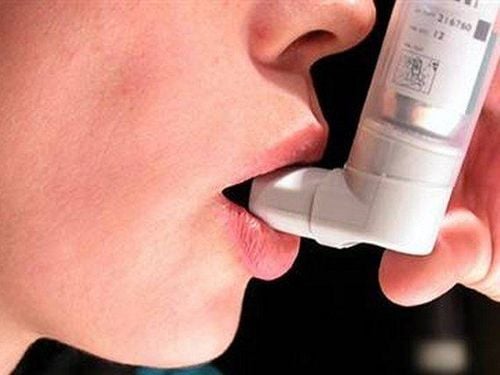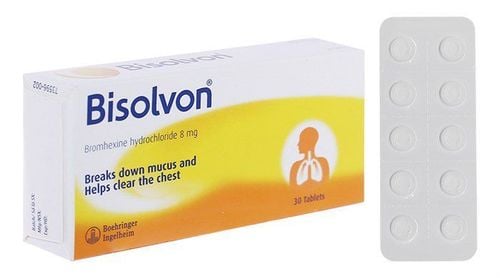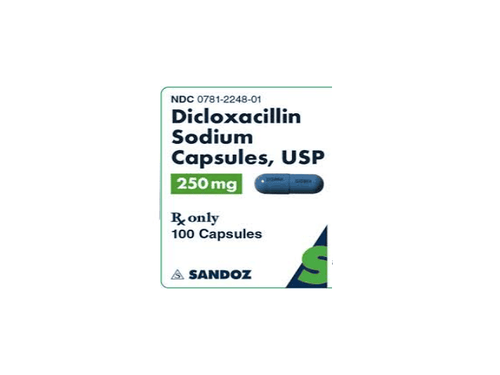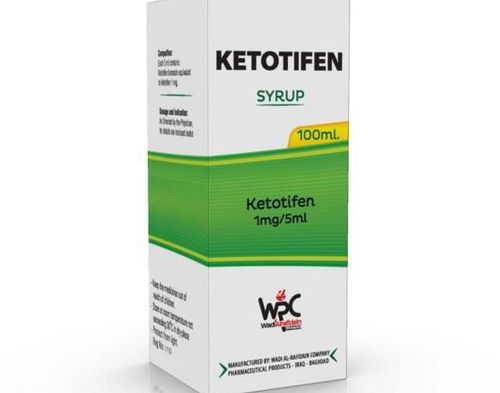This is an automatically translated article.
The article is professionally consulted by Master, Doctor Nguyen Huy Nhat - Department of Medical Examination & Internal Medicine - Vinmec Danang International General Hospital.
Nitric oxide (NO) has been known as a gas found in environments polluted by vehicle exhaust and cigarette smoke. Recently, however, breath NO has become more known thanks to its association with FeNO measurement - a highly reliable test that reflects many different pathological conditions of the respiratory apparatus, especially in the respiratory system. bronchial asthma.
1. What is the role of NO gas?
NO gas is produced from the reaction of converting L-arginine to L-citrulline with the catalysis of the enzyme NOS (nitric oxide synthase). There are three types of NOS enzymes: eNOS (endothelial NOS), iNOS (inducible NOS) and nNOS (neuronal NOS).In bronchial asthma patients with atopy, there is an increase in iNOS synthesis in bronchial epithelial cells, thereby increasing NO concentration in the bronchial wall. NO from the bronchial wall diffuses into the bronchial lumen due to the concentration difference. Therefore, fraction of exhaled nitric oxide (FeNO) has been implicated as a direct biomarker for the TH2-type inflammatory response (or eosinophilic inflammation) in patients with bronchial asthma.
2. What is FeNO test?
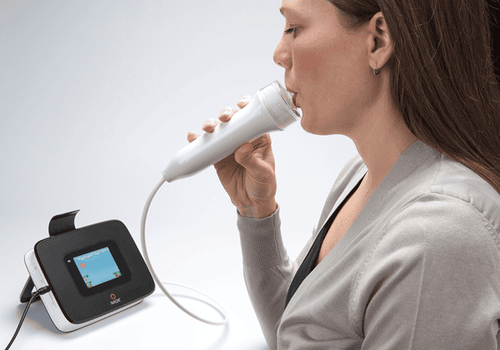
Xét nghiệm đo FeNO là một xét nghiệm đơn giản, nhanh, không xâm lấn và có độ tin cậy cao
Detecting a group of patients with an inflammatory mechanism capable of responding to inhaled corticosteroids (ICS: inhaled corticosteroids) or other specific anti-inflammatory drugs ; Avoid ICS in patients with bronchial asthma who are unlikely to respond. FeNO measurement is the measurement of NO concentration from the lower respiratory tract. The nasal region has a relatively higher concentration of NO than the lower respiratory tract. Therefore, lower respiratory FeNO measurement techniques should avoid sampling NO containing gases from the nasal region. Normally, FeNO fluctuates widely among people but is stable for each person.
The following factors can affect the FeNO test :
Age: In children, FeNO increases with increasing age; Gender: Male is taller than female; Height: Increases as height increases; Smoking status: Decreased when smoking; Current medications: Especially ICS, montelukast, L-arginin; Expiratory flow: Decreases as flow increases. FeNO is elevated in asthmatic patients compared with normal people. Repeated measurement of FeNO during the steady-state phase in asthmatics can determine the normal FeNO value of each patient. FeNO is also elevated in people with atopy, whether asthma or not. In addition, FeNO can be increased in the following diseases: bronchiectasis, viral respiratory infections, systemic lupus erythematosus, cirrhosis, organ rejection disease. FeNO is decreased in the following diseases: HIV infection, pulmonary hypertension, cystic fibrosis.
3. The role of FeNO test in bronchial asthma
3.1. In disease diagnosis FeNO measurement is recommended as a biomarker to diagnose asthma, monitor response to ICS, adjust ICS dose, verify adherence, and predict sensitivity. As the specificity in the diagnosis of asthma can be up to 94% and 93%.Low FeNO is a reliable indication that a TH2-type inflammatory response is absent. Excluding the presence of airway inflammation is helpful in interpreting the patient's symptoms. For example, in patients with uncontrolled asthma, low FeNO helps doctors focus on finding other diagnoses (such as obesity, GERD, or an anxiety disorder) rather than increasing the dose of ICS unnecessarily. FeNO responds rapidly and corresponds to the daily dose of ICS. That means FeNO tells us what to expect when starting or increasing the dose of ICS.
Furthermore, compared with other tests that assess inflammation (e.g. eosinophils in sputum, bronchoalveolar lavage or biopsy samples), FeNO measurement has many advantages because of its ease of use. performed, non-invasive and precise. In addition, because it is easy to perform, measuring FeNO in exhaled breath is a useful tool in screening and detecting asthma patients in the community. The arrival of compact new generation meters also allows this measurement to be performed in the clinic, emergency department or in the patient's home.
3.2. In disease treatment On the other hand, FeNO measurement plays an important role in assessing adherence to treatment for asthma.
Poor patient compliance with background therapy is one of the main causes of poor asthma control. However, in clinical practice, there is no reliable method for assessing adherence. The evidence that FeNO measurement in exhaled air varies with the degree of bronchitis and with the degree of asthma control in the background, allowing to suggest the usefulness of this measurement in assessing patient adherence. asthma .
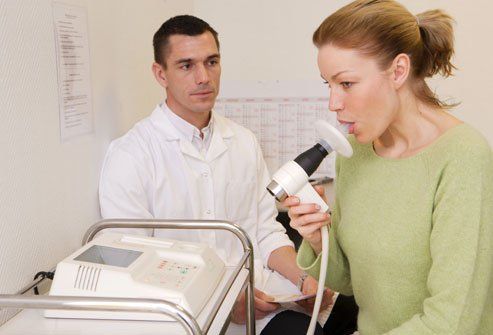
Xét nghiệm đo FeNO đóng vai trò quan trọng trong đánh giá mức độ tuân thủ điều trị của bệnh nhân hen phế quản
In this context, the possibility of performing an individual test predicting corticosteroid sensitivity is of great interest. Numerous articles have shown that exhaled NO concentrations, in correlation with eosinophilic inflammation, are corticosteroid-sensitive. This is a tool with better predictive value than other lung tests, such as measurement of FEV1, bronchodilator response, and PEFR variability.
The usefulness of FeNO measurement in asthma guidelines has not been consistent across studies due to differences in design, sample size, study methods, FeNO thresholds used, and definition of exacerbations. The benefits of FeNO may be evident in certain groups of patients with asthma (eg, obesity, eosinophilia, atopy, ...); when relying on clinically significant FeNO thresholds for individual patients to adjust anti-inflammatory therapy.
FeNO measurement test is one of the contents included in the Asthma Examination and Monitoring Package at Vinmec International General Hospital, in addition to other modern assessment and monitoring tests such as Allergy Specialist Examination, Pulmonary function test and Pulmonary function test.
Asthma as well as other respiratory diseases are examined and treated by a team of highly qualified and experienced doctors at Vinmec hospital. Including Master, Doctor Nguyen Huy Nhat with many years of experience in the field of respiratory disease treatment at Hue Central Hospital, Hoan My General Hospital, .. before being a doctor of General Internal Medicine Department. Vinmec Da Nang International General Hospital.
You can go directly to Vinmec International General Hospital system or register online HERE.





